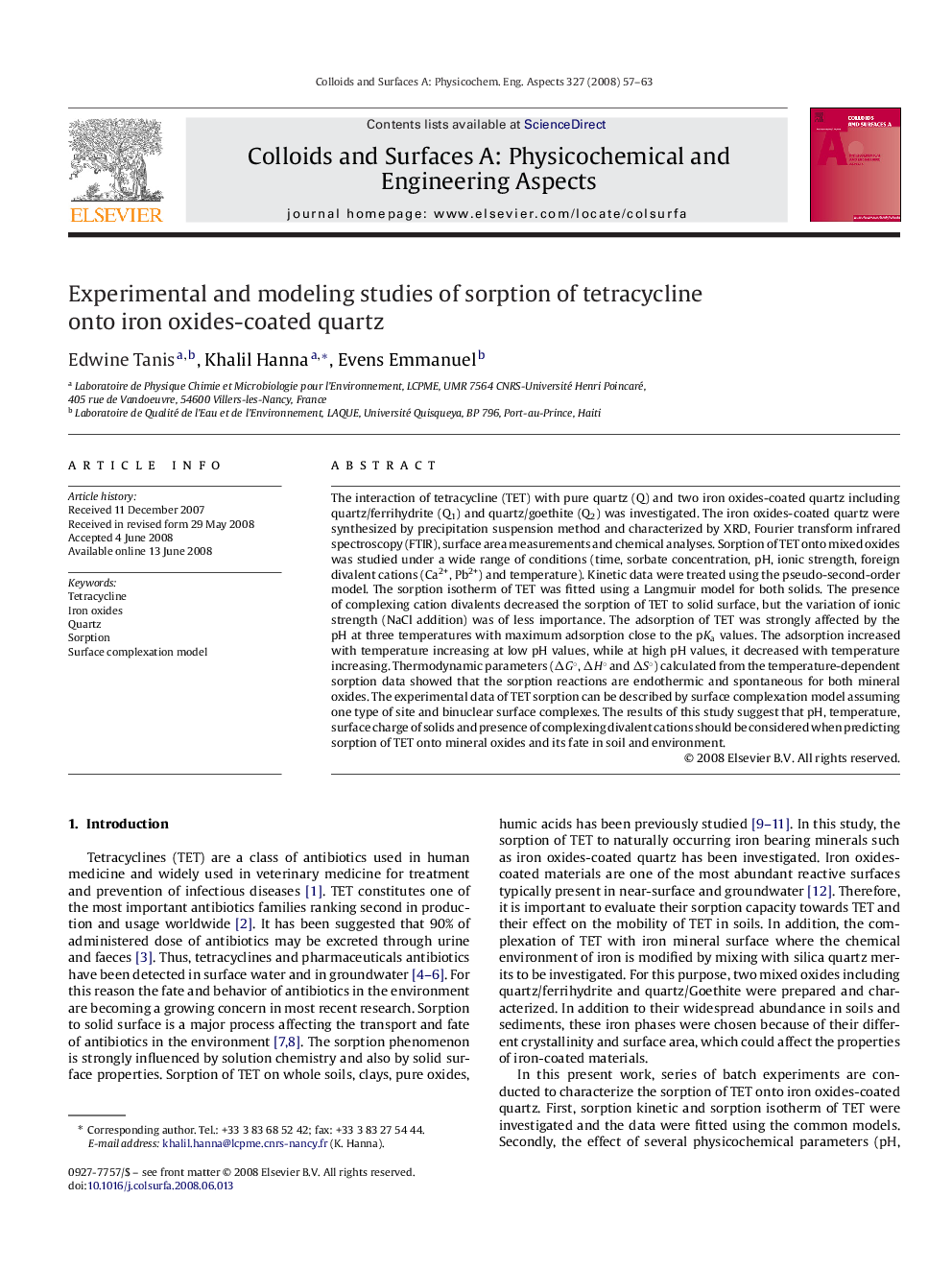| Article ID | Journal | Published Year | Pages | File Type |
|---|---|---|---|---|
| 596390 | Colloids and Surfaces A: Physicochemical and Engineering Aspects | 2008 | 7 Pages |
The interaction of tetracycline (TET) with pure quartz (Q) and two iron oxides-coated quartz including quartz/ferrihydrite (Q1) and quartz/goethite (Q2) was investigated. The iron oxides-coated quartz were synthesized by precipitation suspension method and characterized by XRD, Fourier transform infrared spectroscopy (FTIR), surface area measurements and chemical analyses. Sorption of TET onto mixed oxides was studied under a wide range of conditions (time, sorbate concentration, pH, ionic strength, foreign divalent cations (Ca2+, Pb2+) and temperature). Kinetic data were treated using the pseudo-second-order model. The sorption isotherm of TET was fitted using a Langmuir model for both solids. The presence of complexing cation divalents decreased the sorption of TET to solid surface, but the variation of ionic strength (NaCl addition) was of less importance. The adsorption of TET was strongly affected by the pH at three temperatures with maximum adsorption close to the pKa values. The adsorption increased with temperature increasing at low pH values, while at high pH values, it decreased with temperature increasing. Thermodynamic parameters (ΔG°, ΔH° and ΔS°) calculated from the temperature-dependent sorption data showed that the sorption reactions are endothermic and spontaneous for both mineral oxides. The experimental data of TET sorption can be described by surface complexation model assuming one type of site and binuclear surface complexes. The results of this study suggest that pH, temperature, surface charge of solids and presence of complexing divalent cations should be considered when predicting sorption of TET onto mineral oxides and its fate in soil and environment.
